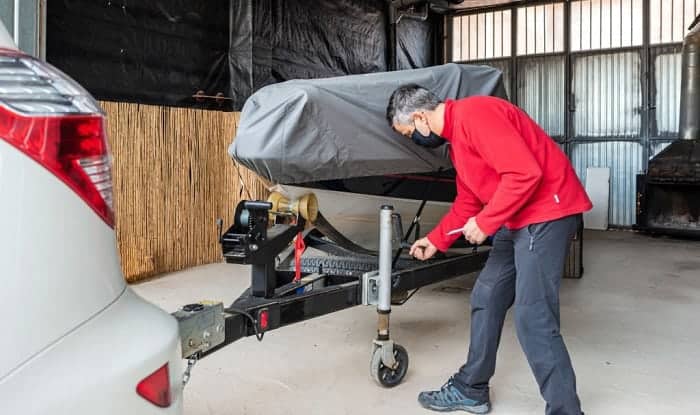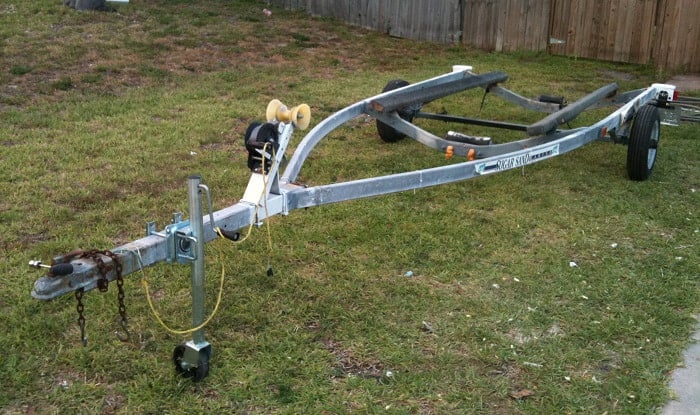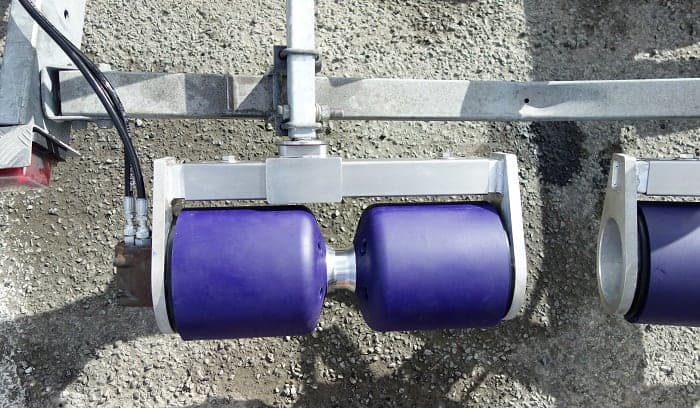Ask most novice boaters, and chances are, they’ll put a loading boat on a trailer as one of the top struggles they face. The stress could ruin the whole boating experience. Especially if you’re by yourself and the thought of damaging your prized vessel constantly gnaws at you.
These same anxieties plagued me when I was trying to put a boat on a trailer before. Thankfully, it only takes remembering a couple of fundamental steps, which include backing down and submerging your trailer properly, driving and securing the boat. I’ve compiled here a guide on how to load a boat on a trailer along with a few alternatives and safety tips, too.
Table of Contents
List Of Methods And Tools You’ll Need
I often rely on three proven ways to make boat loading as hassle-free as possible. I will explain the standard way of doing it by yourself first, the tie-up method, and using a roller trailer. If you need to make things easier for you, I’d recommend the tie-up method, since it’s versatile in that it can be applied to most types of boats in different sizes.
You won’t need to prepare many tools other than what’s already in your trailer and boat. These include the:
- Bunk boards
- Winch strap
- Transom straps
- Transom saver
I also often rely on my truck’s rear video camera screen to help in aligning the boat easily. This is completely optional, but it does help me a ton sometimes.
How To Load Boat On Trailer By Yourself?
Step 1. Backing Down Correctly
Slowly back down your trailer, taking care to keep the trailer straight once it hits the water. If you have a tool in your car such as a rear video camera screen with alignment markers, then that would be neat to have.
I use one often and almost always never have a hard time keeping the trailer aligned while backing down. Back down until the bunk boards are all the way down into the water.
Step 2. Submerge Up to a Third of Your Trailer
Take note of this second step because, believe or not, this is when most boaters tend to make the biggest loading mistakes. In fact, almost half of the difficulties I had when loading a boat onto a trailer disappeared when I paid closer attention to how I’m submerging my trailer in the water.
First things first: you have to at least submerge a third of it in the water. I stick to this rule, so I won’t have to go into the specifics when the water near the ramp is too deep or shallow. If you lower your trailer too deeply, expect to just float right off and back to the water it goes. I’ve lost count of the number of times this frustrating thing had happened to me back when I was still a beginner.
On the other hand, if you’re dealing with a decidedly shallow ramp, you should consider lowering it further down until you reach that ⅓ mark.
Step 3. Carefully Drive the Boat onto the Trailer
With the trailer appropriately submerged, it’s now time for the actual loading step. The trick to doing this easily in a single go is to keep the vessel straightened out. Position it in a way that you’ll be able to drive the boat in a straight line toward the trailer. Don’t bother torturing yourself by loading it while turning your boat.
Take your time to make the right adjustments. Use an object either on your car or trailer that can be used to gauge whether the nose of your boat is directly centered with the trailer. This could be your car’s emblem at the trunk or the plate number. Of course, this is assuming you backed down with the trailer as straight as possible.
Once you’ve positioned the boat correctly, start driving toward the trailer. Go in nice and slow. The moment the boat hits the trailer, assuming you submerged it in the right way, you should feel it smoothly grab the boat every time. Since you went straight, the bottom of the boat’s nose should land on the winch post or stopper without issue.
No adjustments are needed or the usual issue of floating off since you didn’t dip the trailer into too deeply.
Step 4. Raise the Motor and Secure the Boat
I always raise or trim the motor up until the boat is safely on the trailer because you’ll only risk damaging it when it drags on the ground. Afterward, shut off the power. Go over to the winch then lock it, making sure it’s all good and tight.
If your trailer has transom straps and boat buckles, be sure to use them for added security. Keep the motor weight off the transom by running a transom saver over the former. And that just about does it!
The Tie-Up Method
One other way I load a boat on a trailer is by tying it to the dock. This is especially helpful if you’re not confident of your aligning skills yet. It does require more time than the average way I usually do it as explained above since you have to tie the boat first. It also doesn’t require you to drive the boat.
Anyway, here’s how I go about it. Once I’ve tied the boat to the dock, I attach a long line of rope to the stern cleat and bow. I then use this line to “walk” the boat onto the trailer while I’m on the dock. You can view a good demonstration of this in the following video:
Loading Your Boat To A Roller Trailer
If I have to work with a roller type to load a boat onto a trailer, I usually don’t follow the ⅓ rule that much. Instead, I focus on the pairs of rollers on the back. I don’t submerge them completely. Instead, I make sure that they’re only around half-submerged. I then drive the boat on.
If I’m having trouble getting the boat set on the winch, I can always just clip it using the said tool then use it to pull the boat in place. Since you’re working with rollers, you’re more likely to have rolling-off issues. This is why I simply leave my truck’s motor in gear while idling to prevent them.
Other Tips To Remember
Besides the actual process of loading your boat onto your trailer, you should also remember a few other factors like ramp etiquette and safety precautions. Keep these things in mind the next time you go to your next fishing or cruising trip:
- Let’s assume you’re not the sole boater on the ramp, as this is a common scenario people face. Whether the other person is loading or launching a boat, it’s always better to wait your turn so you’ll be able to make corrections easier. That is unless you’re on a relatively wide multi-lane ramp.
- If it’s dark and you’re not alone on a multi-lane ramp, turn your headlights off but leave your running lights on while backing down. This is so you won’t end up blinding people trying to load or launch.
- Remove anything on the trailer that may interfere with the launching and loading of your boat. Seaweeds tend to wrap themselves around the bunk boards, which may affect how smoothly your boat goes onto the trailer.
Conclusion
Did you find this tutorial on how to load a boat on a trailer enjoyable and helpful? Remembering these procedures has made my life as an avid fisher and boater that much easier. I’m confident that you’ll think the same once you get the hang of them. Please don’t be shy to tell me your thoughts in the comments below.
If you find these tips share-worthy, know that it would do me a load of good if you take the time to share this article with your friends and family who are still struggling with loading their vessels.

“I am James Harvey – founder of Boating Basics Online. It is established with the drive to help out first-time boaters, which are those desiring to explore their way through the water. So if you are new to boating, start from here with me. “



